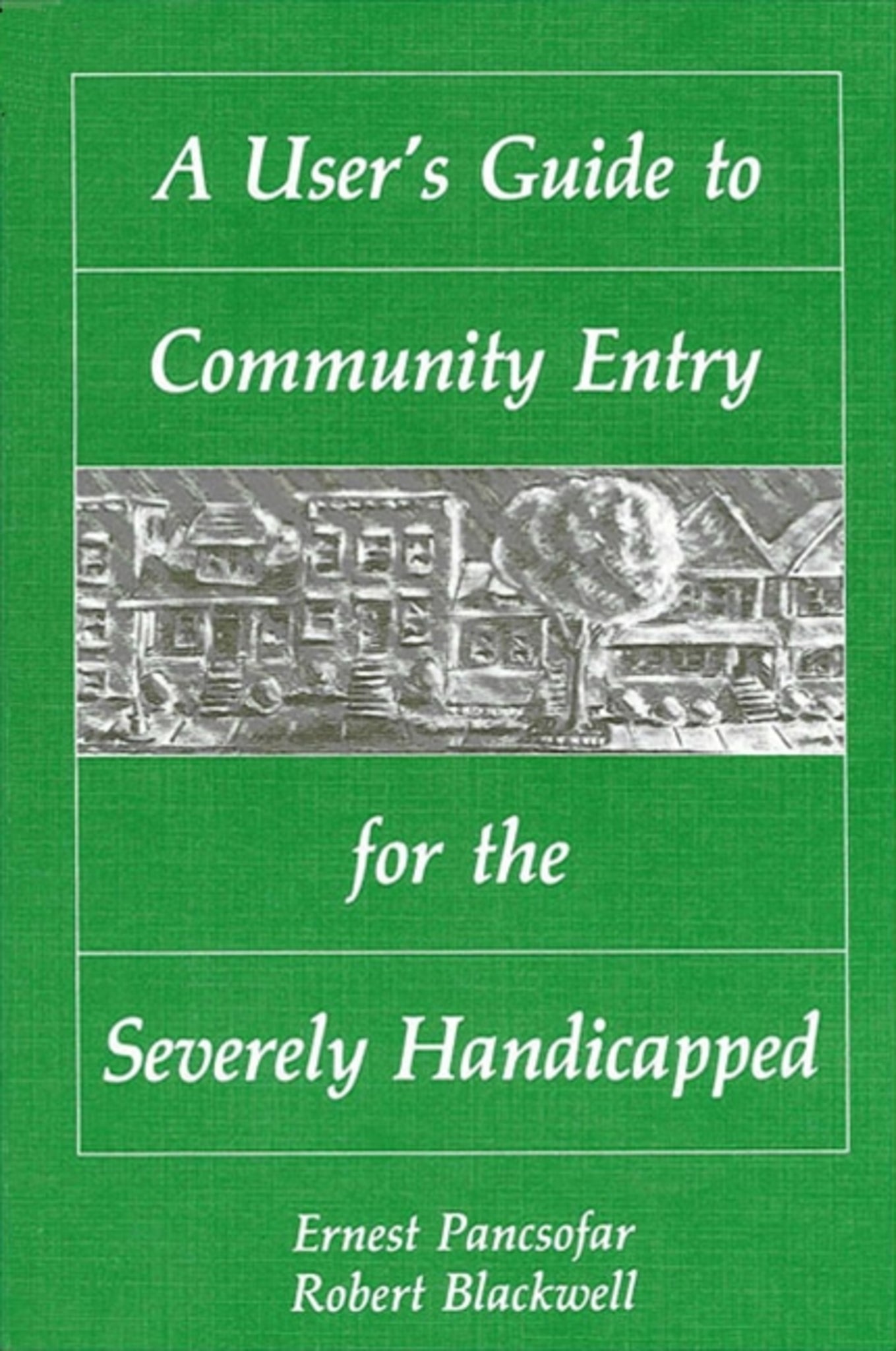We're sorry. An error has occurred
Please cancel or retry.
A User's Guide to Community Entry for the Severely Handicapped

Some error occured while loading the Quick View. Please close the Quick View and try reloading the page.
Couldn't load pickup availability
- Format:
-
30 September 1985

Once "warehoused" in institutions, many severely handicapped individuals are now living in community residences. Yet there are few resource materials available for those who face the difficult task of planning and operating these residences. A User's Guide to Community Entry for the Severely Handicapped offers practical guidance for creating the most home-like, least restrictive residential settings. Committed to the right of all individuals to live in their home community, Pancsofar and Blackwell address topics of vital concern to residential planners, administrators, and direct care personnel. The Guide covers administrative and programmatic issues, offering a wealth of suggestions, examples, forms, and checklists. It is a valuable special education textbook and reference work, and an excellent resource for families.


Preface
Introduction
1. Philosophic Orientation
Normalization2. Range of Residential Options
Criterion of Ultimate Functioning
Competence-Deviance Hypothesis
Least Restrictive Environment
Dignity of Risk
Ecological Orientation
Summary
Community Living Alternatives3. Evaluation of Community-Living Options
Evaluative Review of Sheltered Villages
Evaluative Review of Small Group Homes
Summary
Needs Assessment4. Financing a Residential Home
Formative Evaluation
Cost Effectiveness
Summary
Funding Sources5. Transitioning Residents from Previous Living Environments
Private Funding
Profit Funding
Local Agency Funding
Purchase of Service (State Funding)
Medicaid: Title XIX (Federal Funding)
Other Financial Considerations
Summary
Gradual Introduction to the Home6. Voluntary Community Resources
Preserving Some of the Old
Personalizing the New Home
Transferring Relevant Information
Establishing Personal Relationships
Understanding Special Needs
Trial Period for New Residents
Summary
Coordinator: Volunteer Resource Personnel7. Instructional Strategies for Conducting Training Programs
Facility Needs: Potential Volunteer Assistance
Residential Advisory Board
Other Resource Personnel
Suggestions for Working with Volunteer Assistance
Organizational Plan for Establishing a Volunteer Program
Volunteer Program Forms
Summary
Antecedent Change8. Domestic Living Skills
Prompt Hierarchies
Least Prompting
Most Prompting
Time Delay
Modifying the Task Presentation
Chaining
Adding and Fading of a Color Cue
Consequent Changes
Resident Reinforcement Survey
Summary
Current and Subsequent Domestic Living Inventories9. Leisure Time Activities
Environmental Analysis for Household Cleaning Tasks
Safety Needs for Group Home Residents
Domestic Domain
State of the Art Resources
Overview/Suggestions for Leisure Time Programming10. General Community Functioning
Leisure Time Activity Content Areas
Arts/Crafts
Games/Table
Physical Fitness
Hobbies
Sports/Games
Social
Sample Instructional Formats for Selected Leisure Activities
Partial Participation in an Activity
Residents with Restricted Leisure Time Activities
Suggested Activities
Community Involved Program
A Final Thought
Interview Resident, Peers, and Primary Care Providers11. Characteristics of Model Training Efforts Within Residential Settings
Locate Specific Environments
Analyze Characteristics of Activities
Develop Date Sheets
Use Data Sheets in Specific Environments
Develop Task Analyses
Develop Training Strategies
Summary
An Established Philosophy StatementReferences
Domain Referenced Curriculum
Community-Based Activities
Interaction With Nonhandicapped Peers
Involvement of Citizen-Advocates and Neighbors
Systematic Instruction Strategies with Data Based Decision Procedures
Hierarchy of Documented Procedures for the Decrease of Aberrant Behavior
Regular Inservice Sessions to Update Staff on Current State-of-the-Art Knowledge
Daily Schedule for Each Resident
Use of Generic Medical Facilities and Community Services
Self-Evaluation Checklist
Index



